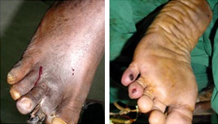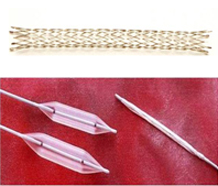|
This disease, PVD is so important that it is 30% of times associated with blockages in blood vessels of heart & brain which are severe & may at time life threatening. When lower extremity artery disease is associated with diabetes ,coronary artery disease is especially severe and prognosis is poor. The PVD may some time lead to ugly looking amputations of legs. And you can imagine life without legs!!!
Fortunately the lower leg PVD, if detected and treated early, can usually be resolved & limb amputation can be avoided. Marking the occasion of World Vascular Day, Dr Sachin Dhomne, organised a one-day Continued Medical Education program on PVD, as an aid to family doctors and in order to better identify and treat patients at risk for PVD. "The more people know about the disease, the greater the chances are of preventing disability and other serious consequences," says Dr Sachin Dhomne.
With increasing day to day life stress, sedentary habits, obesity the prevalence of PVD is increasing.
The risk factors associated with peripheral Vascular disease are
- Cigarette smoking
- High Cholesterol
- High Blood Pressure
- Diabetes
- Sedentary life style
When to Suspect Peripheral Vascular Disease (PVD)
While exercising or walking feeling of pain, Numbness, weakness, giving way, cramping in leg and is relieved by 3-6 minutes of rest. Some time patients may present with non-healing ulcers or gangrene.
If these symptoms are there, don’t ignore it & consult your physician as early as possible. Depending on the clinical condition the physician may advise you the related investigation like Doppler Sonography & Angiography.
Few risk factors are beyond our control like older age & family history. But the other associated risk factors can really be controlled & the PVD can be kept in check Dr Dhomne says.
Medical Management of PVD is
- Stop smoking
- Good diabetic & blood pressure control
- Regular exercise
- Weight Reduction
- Antiplatelets
- Statins
Smoking Cessation "Is beneficial" as per Clinical Evidence
- Smoking is the most significant independent risk factor for development of PVD
- Observational studies have demonstrated that continued smoking leads to progression of symptoms, increased need for intervention and poor prognosis post intervention
- Clinical Trials found a statistically significant increase in max walking distance in patients who stopped smoking
- Given increased risk of PVD associated with Heart Attacks & Strokes, smoking cessation is strongly encouraged.
Lipid/ Cholesterol Lowering Therapy
Decrease in cholesterol levels also helps a lot in PVD patients. It can be controlled by dietary and pharmacologic therapy. Regular dietary habits, avoidance of junk foods, oily & fried preparations, taking lot of green vegetable salads & lot of water also helps in lowering cholesterol levels.
How to exercise for maximal benefit?
- Greatest improvement in pain distances occurred with:
- Exercise to near maximal pain
- At least 3 times per week
- Duration of at least 6 months
- Walking as exercise mode
When to refer to vascular specialist?
When the PVD patients continued to have severe leg pain or rest pain despite of drugs & exercise the vascular specialist should be consulted. Like angioplasty & stenting in heart vessels, similar angioplasty & stenting can be done for blocked blood vessels of legs in PVD. Blocked vessel can be opened with angioplasty balloon inflation & sometimes metallic stents are used to keep blood vessels opened Dr Dhomne Explained.
When is angioplasty Stenting indicated in lower limb PVD
- Leg Pain limiting lifestyle
- Rest pain and /or non-healing ulcer or gangrene
- Severe Blockages & Narrowing in blood vessels of legs.
Occasionally, surgical bypass grafting is needed when the angioplasty & stenting is not possible. When gangrene of toes has set in, amputation is often a last resort to stop infected dying tissues from causing septicemia.
Unfortunately, many people with the early symptoms of lower leg PVD, especially leg pain on walking, assume that this is just part of getting older and do not seek medical attention until they become severely debilitated says Dr Dhomne.
Alert!!! Don’t ignore the pain in legs while walking & exercising. Consult your physician & vascular specialist & Save your limbs & life
!!! Take CARE!!!
|




